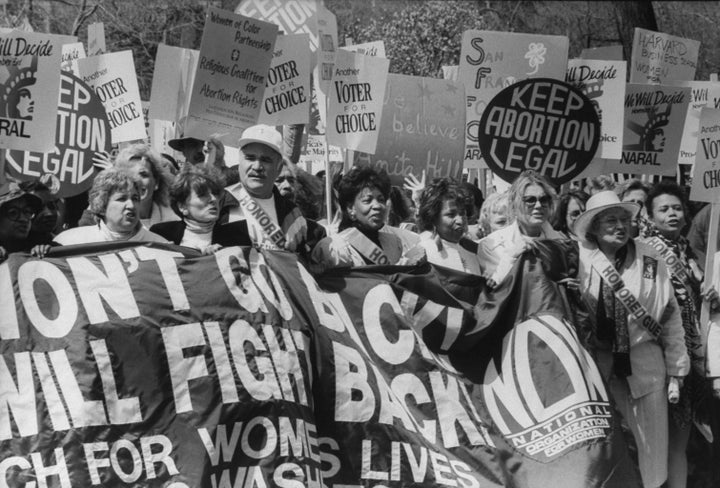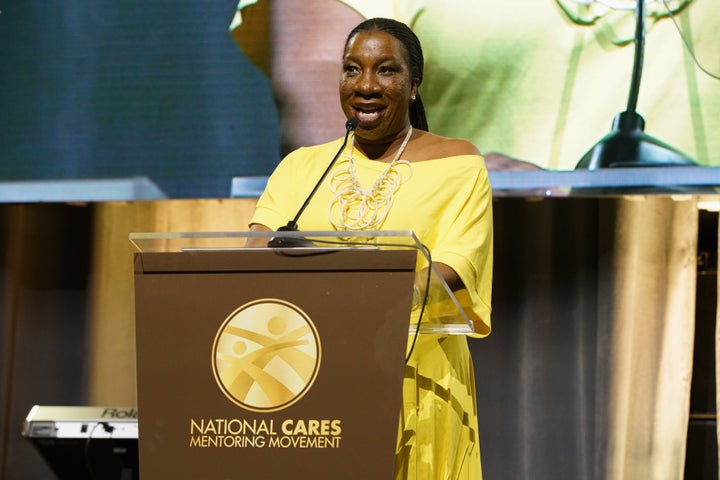
The day after Donald Trump was elected president, I was on a conference call with some women colleagues. Everyone on the line was, as the therapists say, in an activated state. “What I want to know is, what are you white ladies going to do about this?” an African-American woman spat into the phone. My pulse raced; my body temperature ignited in response.
This wasn’t my first lesson in the difficulties of intersectionality, but it is one that has stuck with me. In part because of how my colleague’s accusation, and my internal response, conjured trauma. It’s a trauma that continues to roil below the surface, almost 500 days later. (But who’s counting?) And it was simmering quietly for years before then.
Social movements tend to arise in response to shared trauma. Often that trauma is population-wide, and often it has deep historical roots. When academics discuss the long-term effects of people subjected to mass trauma ― war, genocide, colonialism ― they call it historical trauma. The writer and speaker Joy DeGruy coined the term “post-traumatic slave syndrome” to talk about the shared trauma of African-Americans. Trauma gives movements unity — it’s the literal enfranchising of a disenfranchised people. It’s the “we” that forms community, that says I share this trauma with you, I’ve lived through it, too.
Martin Luther King Jr. was murdered in Memphis, Tennessee, 50 years ago, just as the feminist and antiwar movements began to use the word “trauma.” Years before, at the Holt Street Baptist Church in Montgomery, Alabama, as he called for a bus boycott four days after Rosa Park’s arrest, he essentially defined it in a political and historical context: “We, the disinherited of this land, we who have been oppressed so long, are tired of going through the long night of captivity,” he said. The “we” was clear. White people could march alongside the “we” as allies, but the shared trauma defined roles within the civil rights movement. Just as it defines roles within Black Lives Matter, which has a confident What “We” Believe heading its guiding principles.
But how do you build a movement when traumas aren’t necessarily shared? When ostensible members of a movement see their perceived oppressors marching beside them or organizing the march themselves? What does it mean when those perceived oppressors are there because of their own trauma? This is the stumbling block of intersectionality — which couldn’t be more urgent or overdue. But I think that trauma has a lot to do with why it’s so damn difficult.
“How do you build a movement when traumas aren’t necessarily shared?”
Every moment has variations on this stumbling block. The civil rights movement was hardly a bastion of gender equality. Certainly, the colorism that existed during slavery continued through the movement and lasts today. But men and women alike were chattel by dint of African blood, full stop. The “we” persisted.
We don’t have a similarly united “we” in an intersectional women’s movement. The movement inherited the Second Wave’s failures. White women still climb into power on the backs of the women of color who raised their children. Feminist leadership still skews white until women of color have to insist on being recognized.
Over the past year, as the movement has become defined by the very experience of trauma, white women have claimed the intense and often invisible work of women of color to publicize their own abuse. Corinne Purtill spoke for many people when she wrote in Quartz, “As overdue and welcome as this reckoning feels, there’s also the unsettling reality that a movement built largely on the labor of women of color has been co-opted by a discussion that prioritizes the experiences of victims who are white, wealthy, and privileged over those who are not.”

If you’re a white woman, and you’ve been abused or harassed ― or denied equal pay, or the right to control your own fertility ― that’s a legitimate trauma, and one rooted in collective sexism. If you’re a woman of color, you can add structural racism into the mix. If you’re a trans woman, your traumas become even more complicated. And you carry that crisis into the discourse ― we all do. It’s why we’re there to begin with, like in every other social movement.
“It is really difficult to think about other people and their suffering when you are trying to process or move on from a traumatic experience,” Kali Cyrus, a psychiatrist at Yale who writes about blackness, queerness and disability, told me. “When I think about activists fighting for one issue, or various identity groups bringing attention to their struggle, it is what they know, so that’s why they are fighting to be recognized for their suffering.”
I’m often mad as hell about not being given the benefit of the doubt as a white woman, by colleagues, by friends, by readers... and yet. My traumas are real, and usually quite related to my gender, and yet they’re cloaked in privilege because others have it worse. And the vast, stormy ocean of triggered anger doesn’t exactly provide a stable environment for bridge-building. Especially if, to begin with, you’re a part of the population that needs to work so damn hard to be seen or heard.
“My traumas are real, and usually quite related to my gender, and yet they’re cloaked in privilege because others have it worse.”
Joan Cook is the former president of the American Psychological Association’s Division of Trauma Psychology and does group therapy with combat survivors. She compares what she sees in those groups to the perils of movement-building across disparate traumas. In every group, she says, a pecking order of trauma emerges. Who had it worse: The World War II vets, who were told to go home, get to work and get over it? Or the Vietnam vets, who came home after their tours and were met with savage denigration?
The key to building solidarity from such self-combative trauma groups lies in the difficult work of finding cohesion. “If we want to heal as a group and as individuals, we have to focus on our commonalities and use that commonality as a way to move forward,” Cook says. It’s hard to do, and it takes leadership that can understand the importance of mourning what’s been lost as well and validating what has happened. Cooks notes that President Barack Obama “could help us do this, he had a way of empathizing with people and setting a tone” across a society. Instead, we have a human trauma machine leading our nation and suspending us at loggerheads.
But perhaps Trump’s activating leadership is a salve to pull out infections. What are you white ladies going to do about it? is, so often, the right question to be asking, even if it’s a damn hard question to be asked in a state of trauma. There’s no “we” in that question, no cohesion; only a pointed finger, only a “you.” But it’s a question women need to answer together. If solidarity comes, it’s because we earned it. And that’s a revolution in itself.
Lauren Sandler is a journalist and the author of Righteous, One and Only and a forthcoming book about a year in the life of a young homeless mother.
